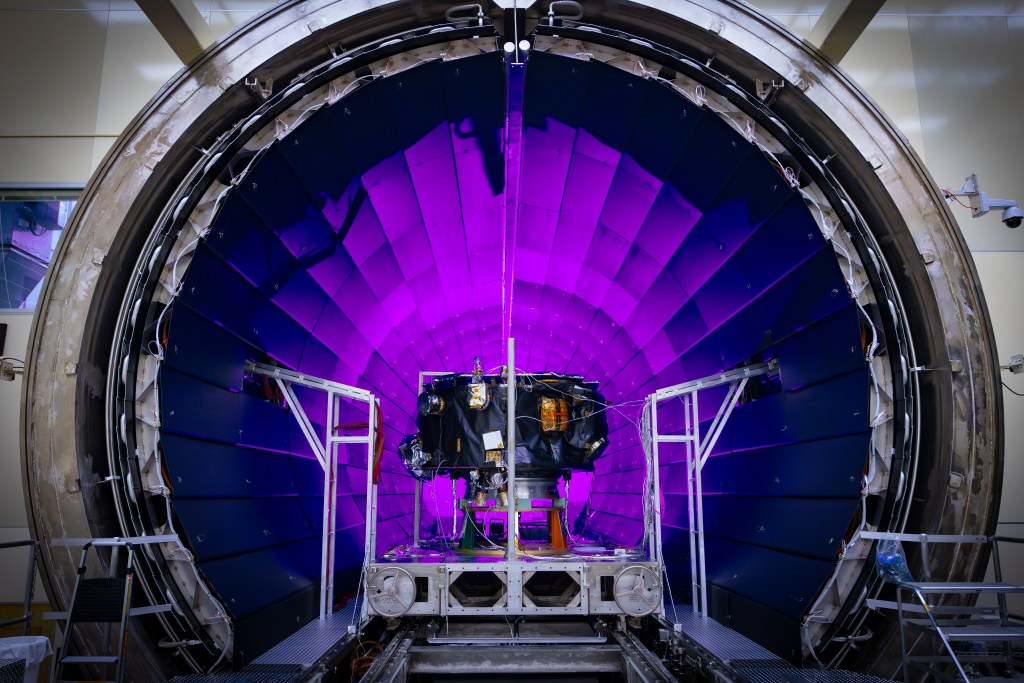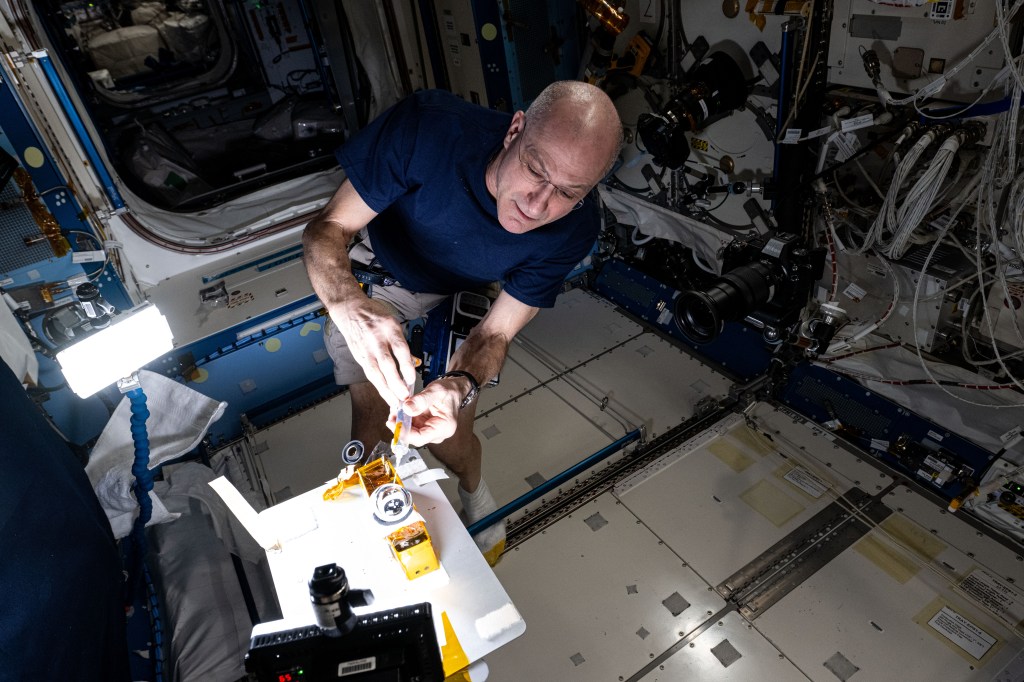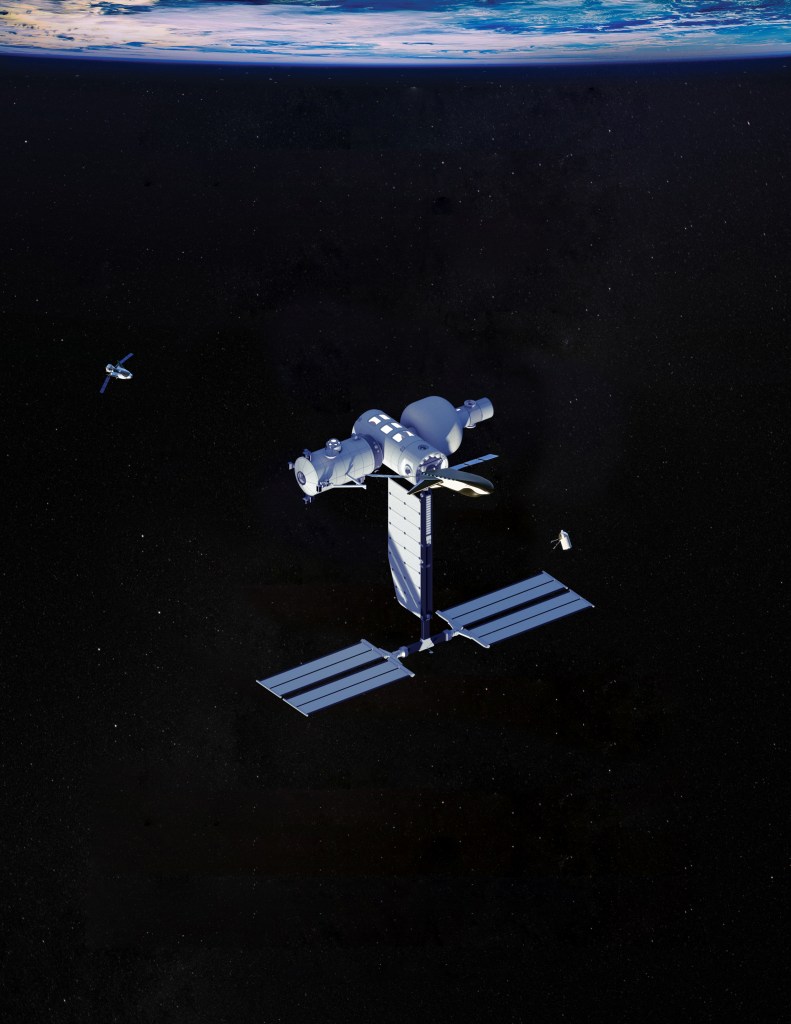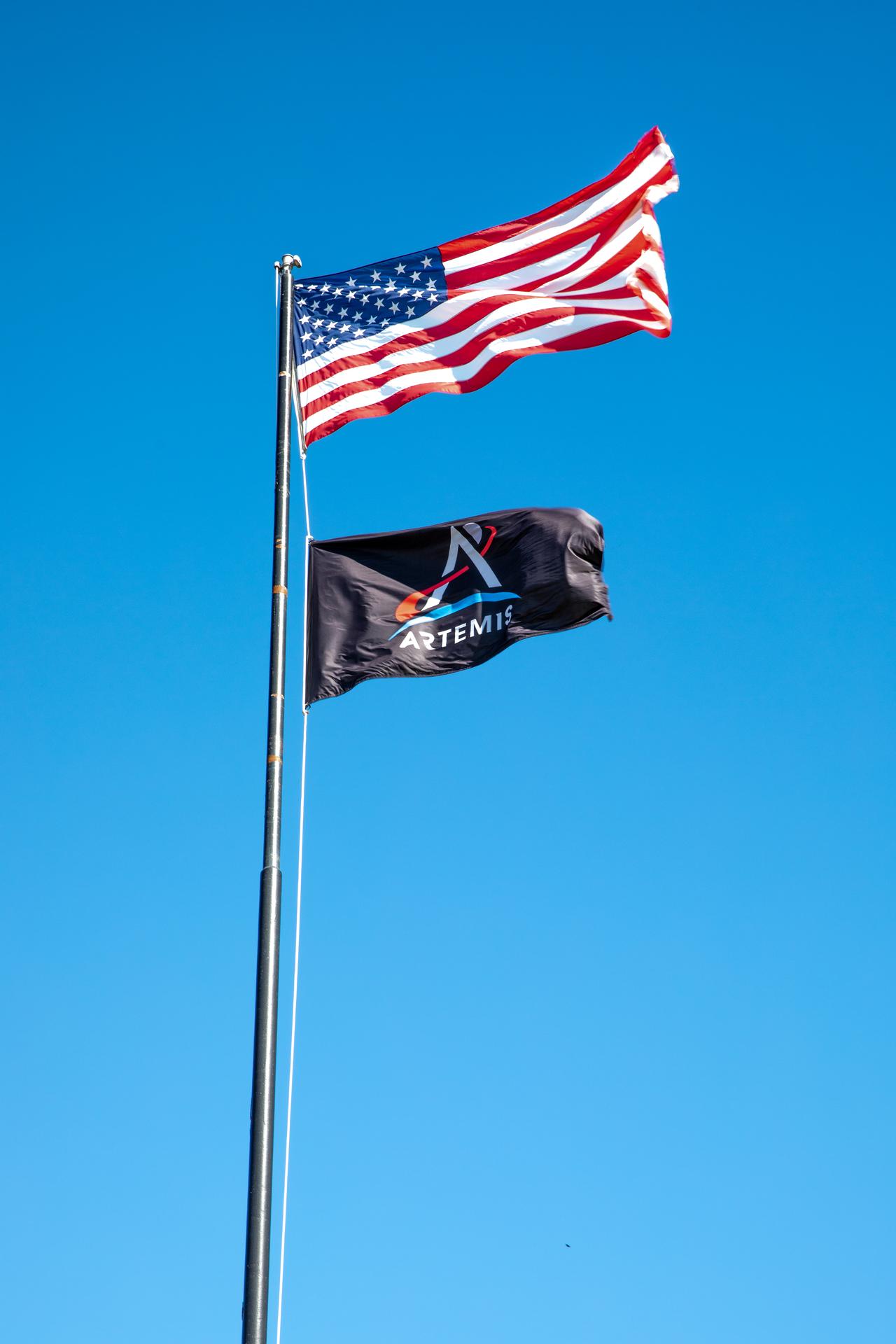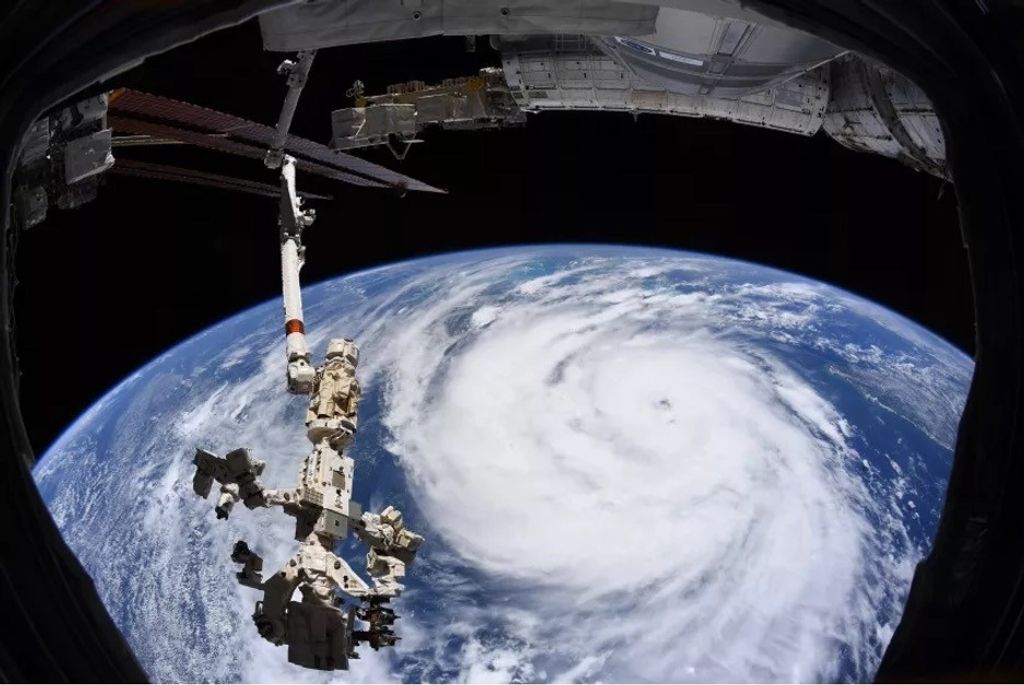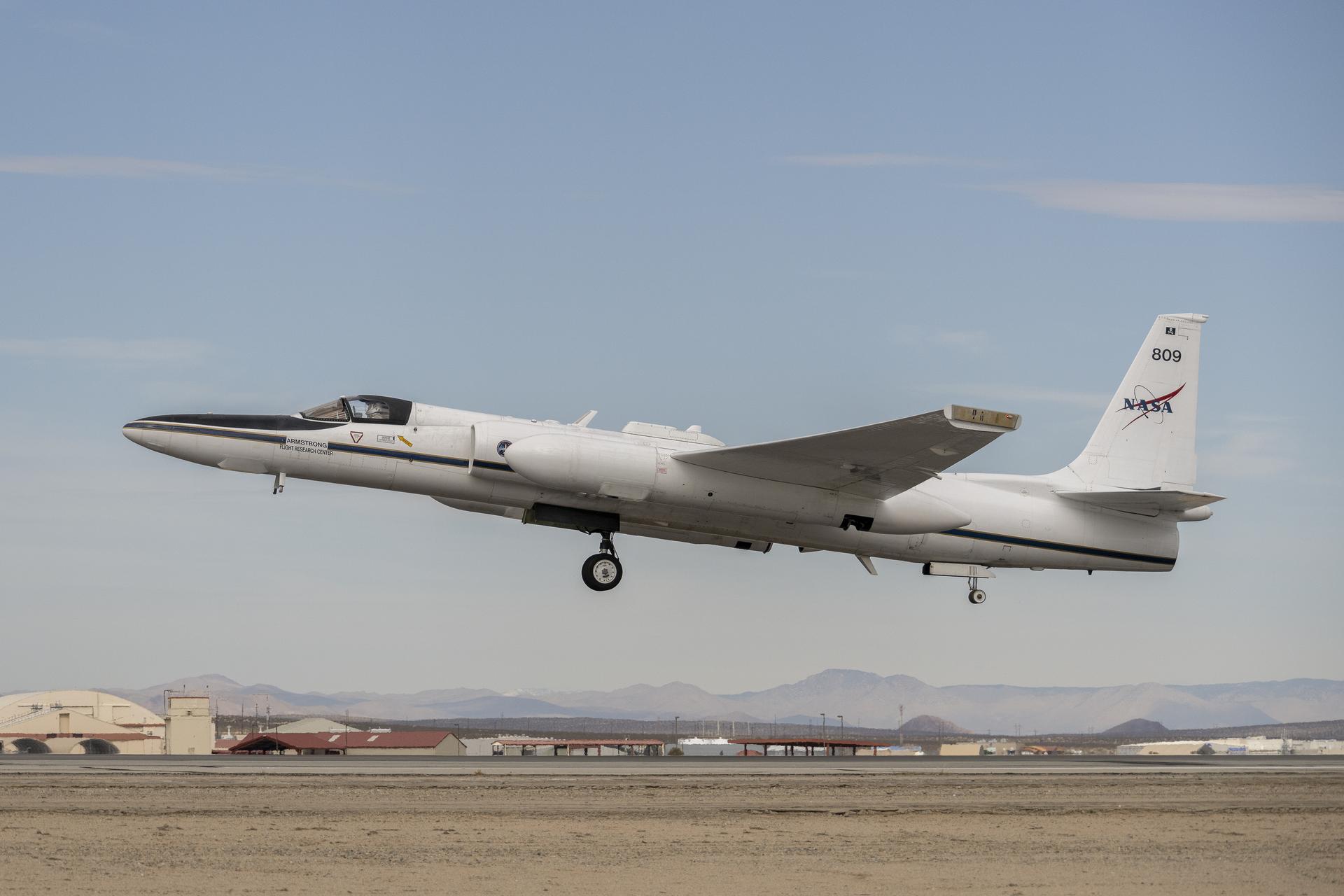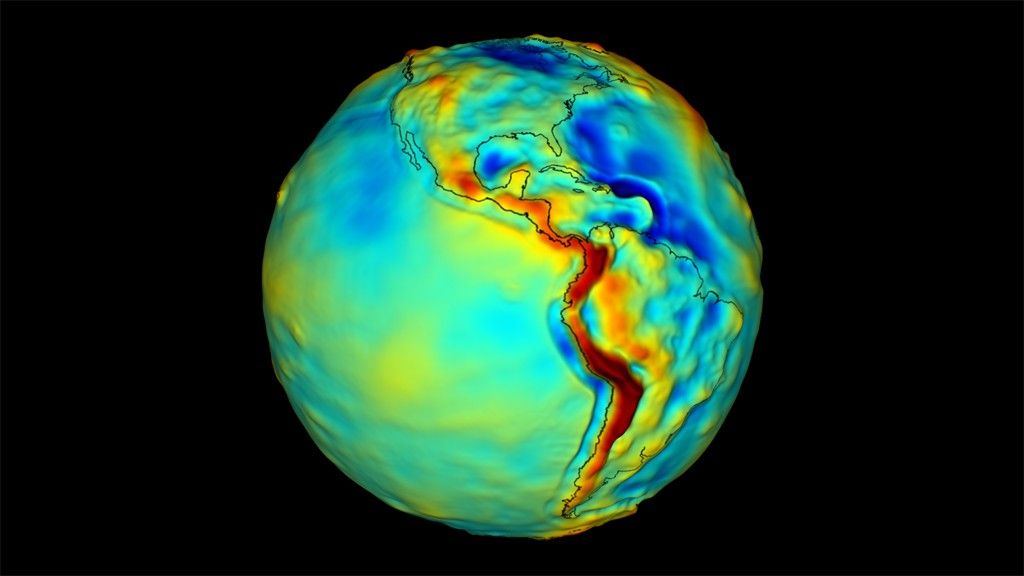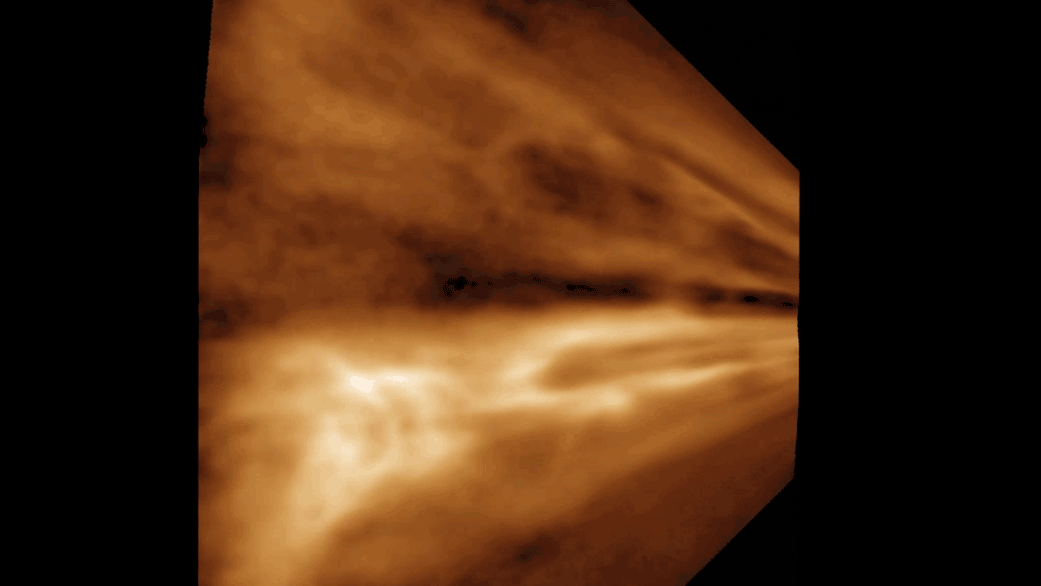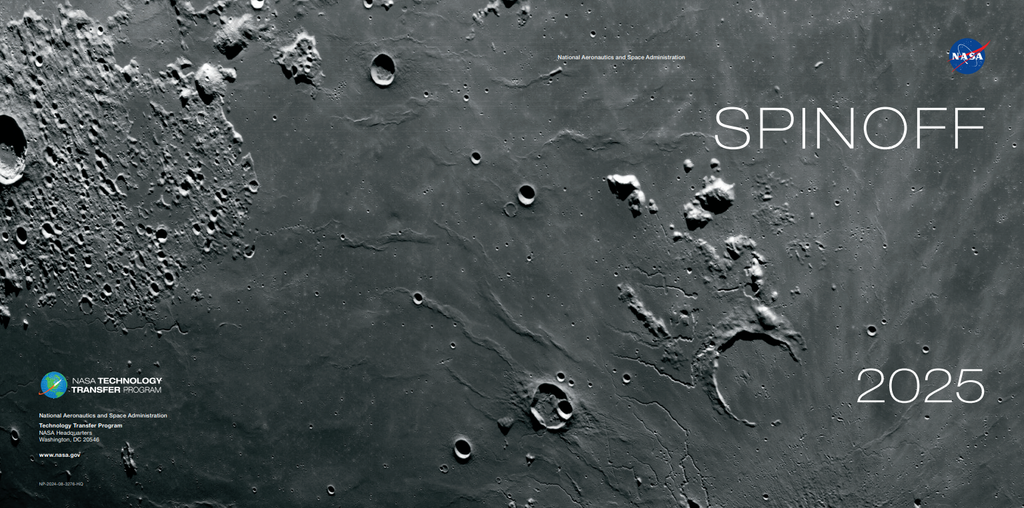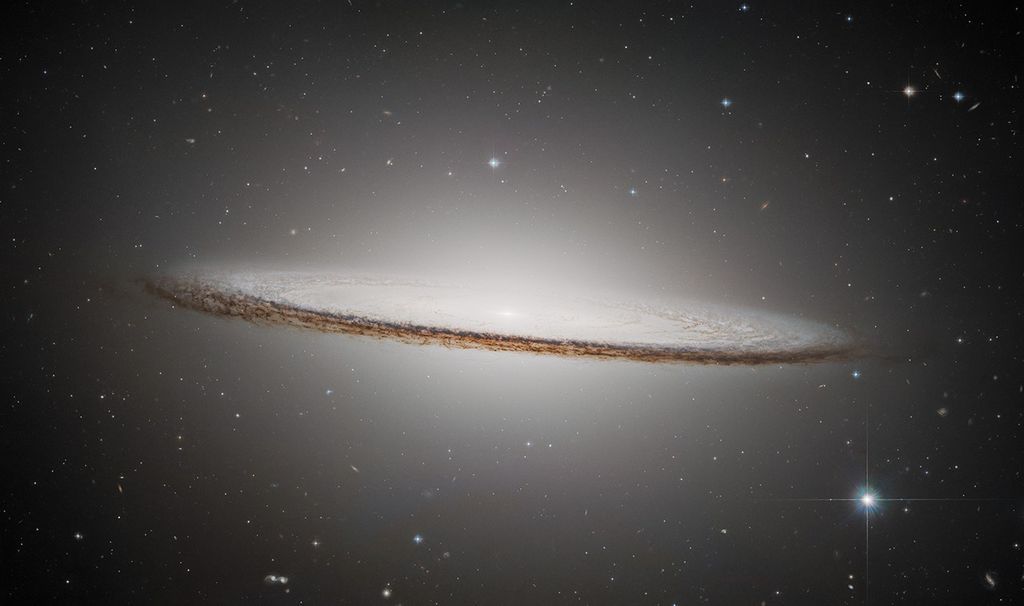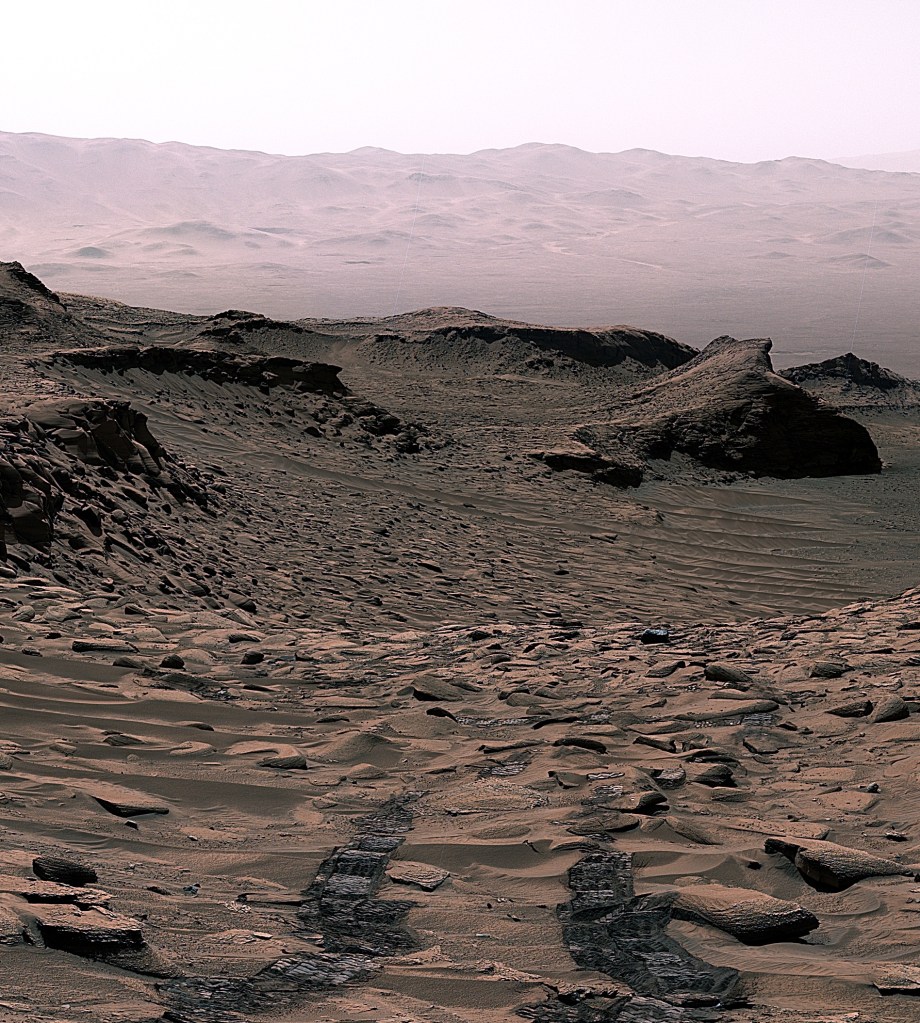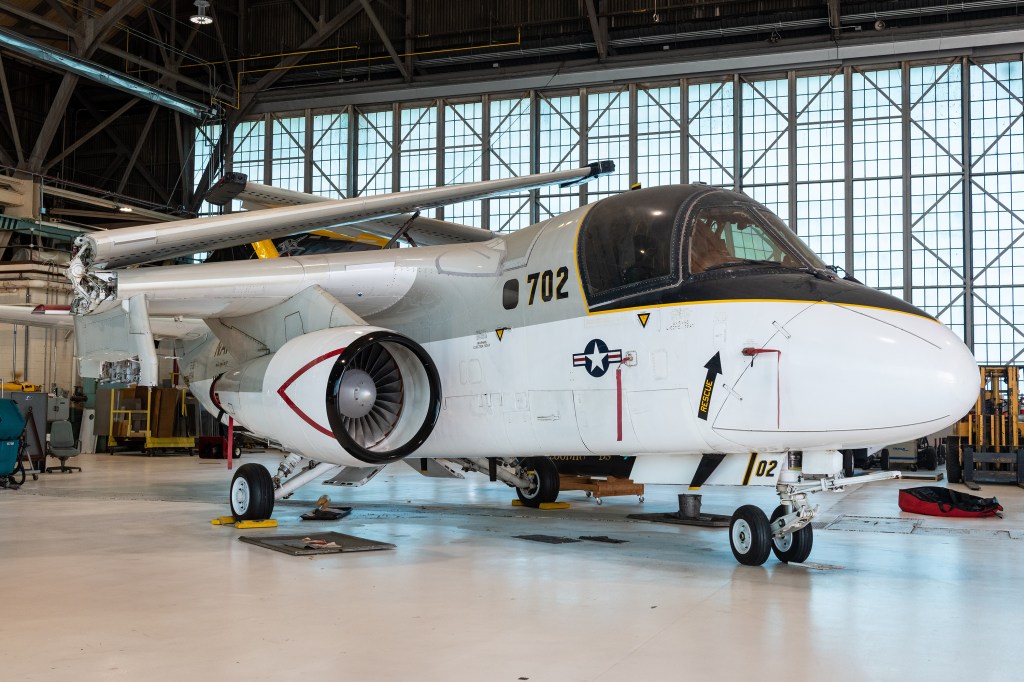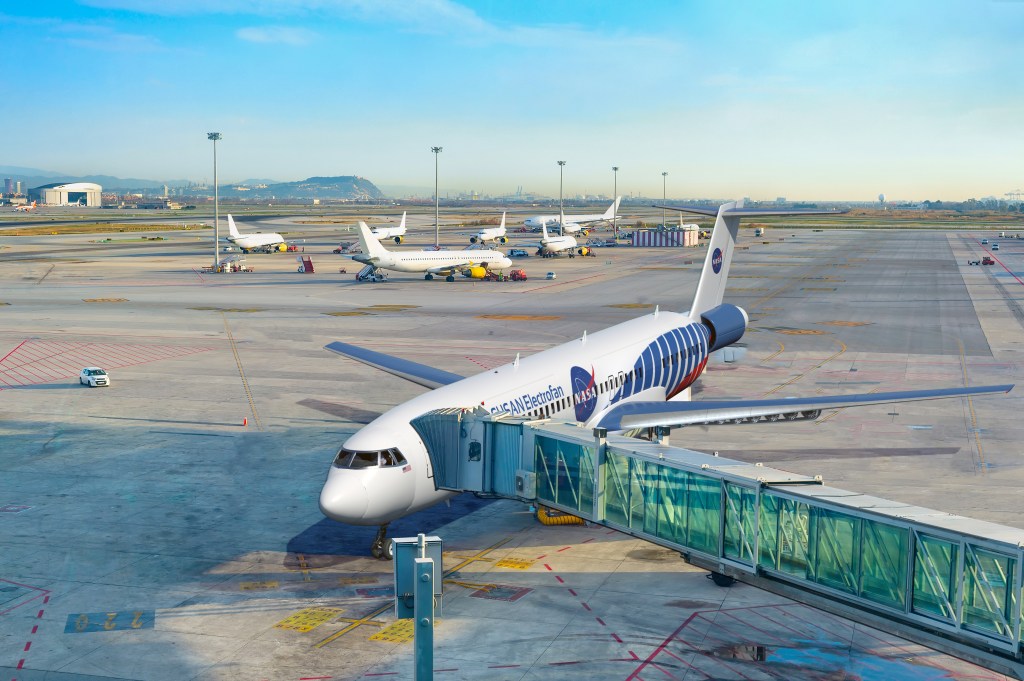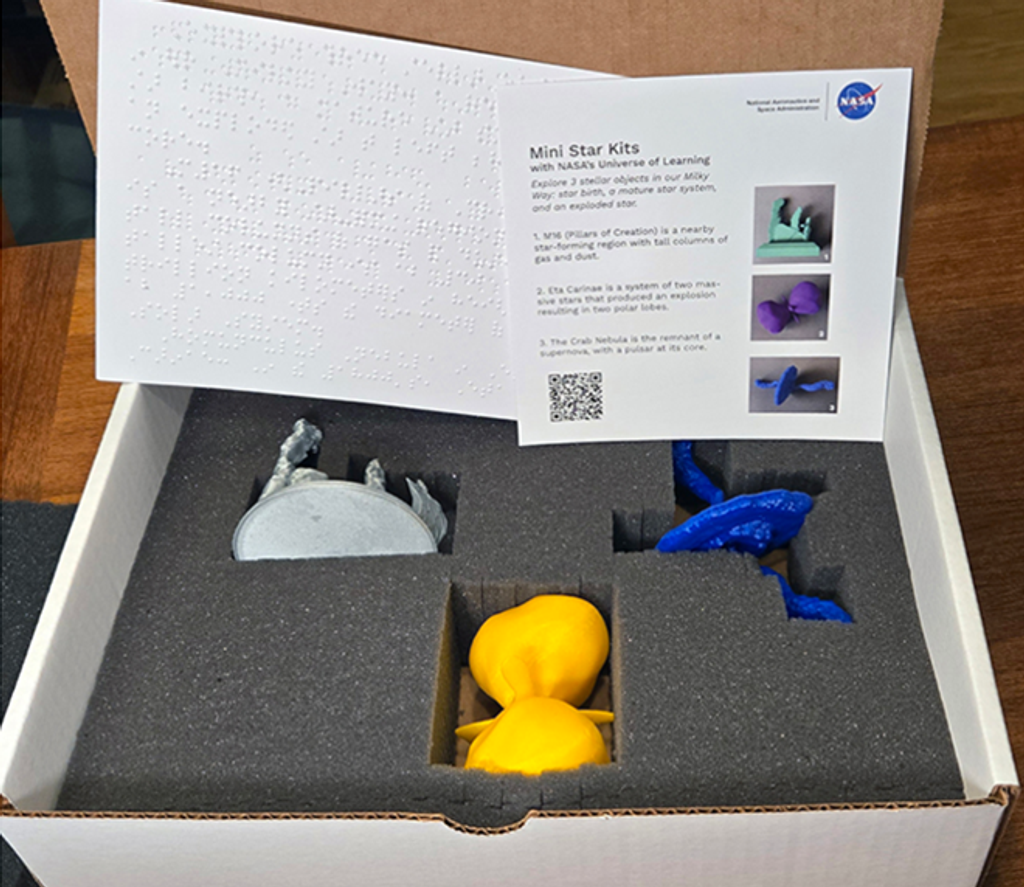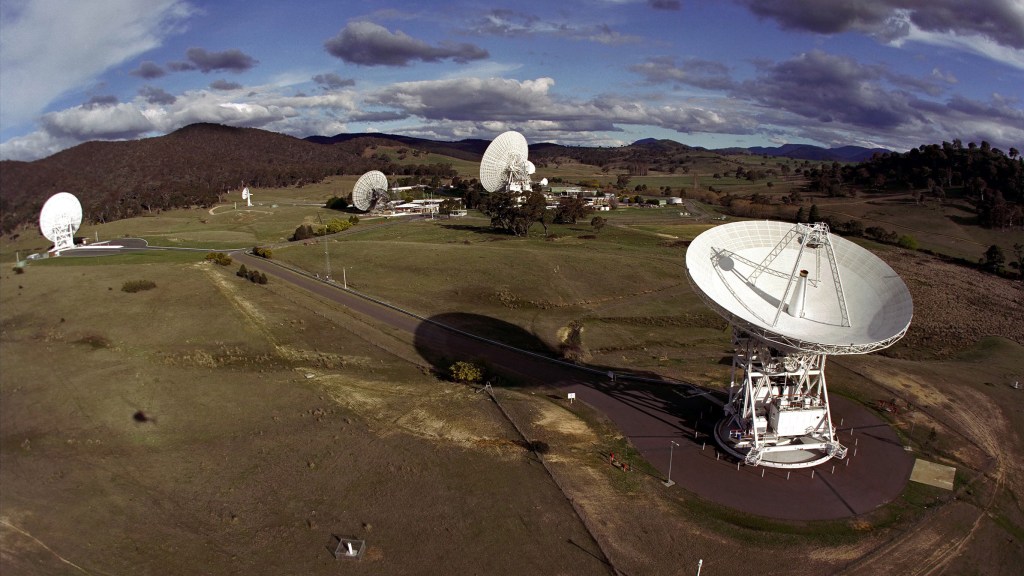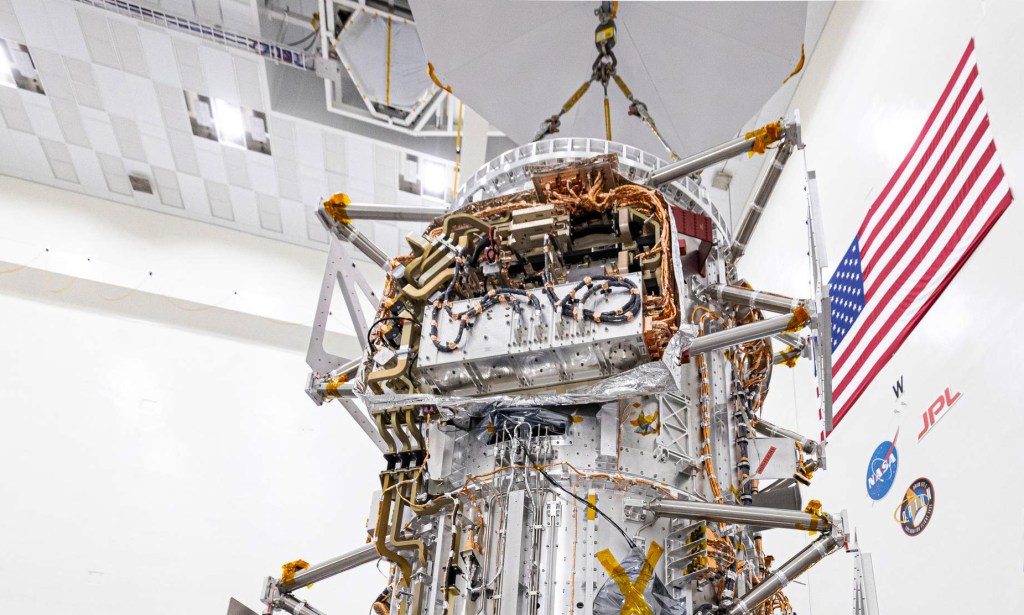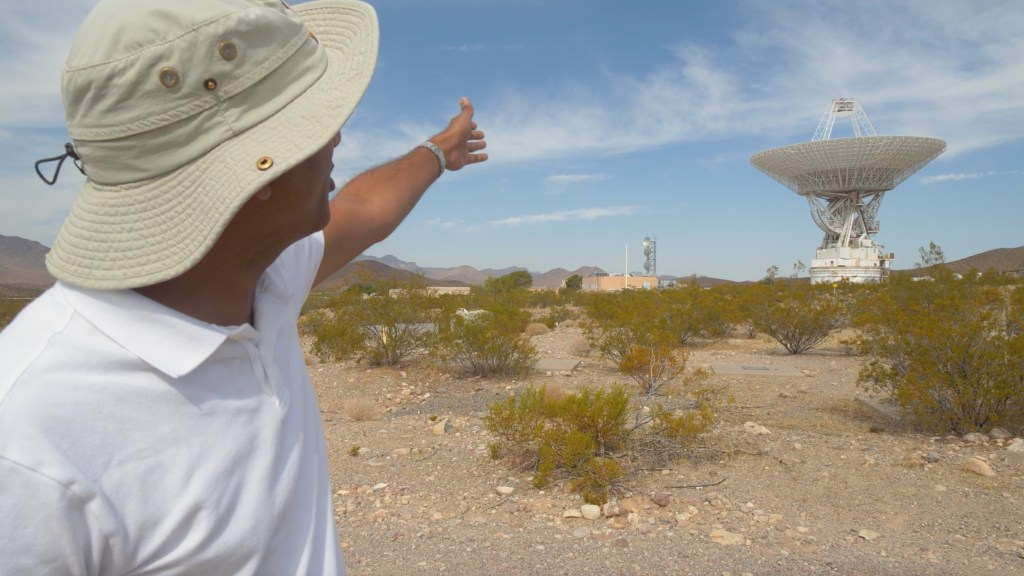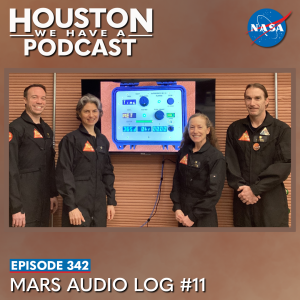
From Earth orbit to the Moon and Mars, explore the world of human spaceflight with NASA each week on the official podcast of the Johnson Space Center in Houston, Texas. Listen to in-depth conversations with the astronauts, scientists and engineers who make it possible.
On episode 342, the CHAPEA crew checks in on their eleventh month in a Mars simulated habitat, and a NASA expert discusses the measures taken to ensure that the year long mission has been conducted safely and ethically. This is the 11th audio log of a monthly series. Recordings were sent from the CHAPEA crew throughout May 2024. The conversation with Dr. Marisa Covington, PhD, was recorded on June 18, 2024.

Transcript
Host: (Gary Jordan): Houston, we have a podcast! Welcome to the official podcast of the NASA Johnson Space Center, Episode 342, “Mars Audio Log #11.” I’m Gary Jordan and I’ll be your host today. On this podcast, we bring in the experts, scientists, engineers, and astronauts, all to let you know what’s going on in the world of human spaceflight and more. We’re back with another log from the CHAPEA crew. CHAPEA, or Crew Health and Performance Exploration Analog, is a yearlong analog mission in a habitat right here on Earth that’s simulating very closely what it would be like to live on Mars. We’re lucky enough to have monthly check-ins with the crew, Commander Kelly Haston, Flight Engineer Ross Brockwell, Medical Officer Nathan Jones, and Science Officer Anca Selariu.
To meet the needs of fitting in with this analog and simulating significant communication delays between Earth and Mars that prohibit us from having a live conversation, the crew’s recording an audio log based off of the questions that we draft for them. On this episode, we’ll play the recording of their 11th month in the habitat, which is here at the NASA Johnson Space Center, and was recorded in May of 2024. We’ll also be bringing in a special guest to learn even more about CHAPEA. This month is on another angle of scientific research, the protections for the subjects. Of course, it should be no surprise that NASA takes locking a crew in a habitat very seriously. It is, of course, needed for good and thorough research, but certain protections are in place to make sure that the research with the CHAPEA crew is ultimately done ethically and safely. This is a practice that’s consistent with all research at NASA, but at least not on this podcast have we had a dedicated conversation with someone on how this all works. At least not until this episode where we’re lucky enough to bring in Marisa Covington, PhD, Director of the NASA Office of Research Assurance with the agency’s Headquarters in Washington, DC. But she’s based here at the Johnson Space Center. Looking forward to this episode. We’re also fortunate this month that we get to hear from all four crew members at the same time. So let’s learn from the CHAPEA crew on how they’re doing, and then from Marisa on CHAPEA research assurance. Let’s get into it.
[Music]
Kelly Haston: Hi, this is CHAPEA 1. We are recording Houston We Have a Podcast, episode 11. I am Kelly Haston, the commander.
Anca Selariu: I’m Anca Selariu, the science officer.
Ross Brockwell: I’m Ross Brockwell, the flight engineer.
Nathan Jones: I’m Nathan Jones, the medical officer.
Kelly Haston: So how’s everything going?
Nathan Jones: Well, I’ll give our what’s become our standard answer. Everything is still going great. I know every month we think that maybe we should have something more in depth or dramatic to say, but we don’t. Things are going really well. I know for me, time is really flying and I think everybody feels that way. So here we are, another month coming by. Any big highlights from the last month or activities?
Kelly Haston: Well, one really big one was that we’ve celebrated Mission Day 300, which was a huge accomplishment for both us inside the habitat and also for the CHAPEA project as a whole, and really shows how hard everyone worked to get us here. And I think we were all really thrilled to see that day come and be able to celebrate it with our crew and also the people outside.
Anca Selariu: We also had the final crop harvest, and we enjoyed the big, quite a hefty amount of produce. And the other thing that we did was have the first ever bowling tournament on Mars, courtesy of Nate Jones.
Nathan Jones: Yeah, so we have certain biological specimens that we collect as part of the mission and, you know, I think it’d probably be stuff that wouldn’t really surprise you. But anyway, as part of that, one of the specimens, we have a bunch of urine bottles and just we are asked to do different team activities each week. And so one of the activities we decided to do was to get creative and create some of our own games. One of them was to create bowling with urine bottles. They were not—
Anca Selariu: Empty. Empty. They were not used.
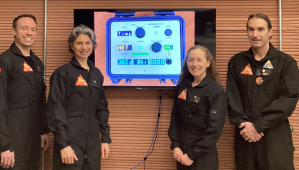
Nathan Jones: We did consider, but very, very briefly, extremely briefly considered the other option.
Anca Selariu: But thank you, med officer, for allowing us.
Nathan Jones: You know, trying to find some other urine bottle games. You never know, you know?
[Laughs]
Kelly Haston: It was definitely a great example of cross-function in the items that we have here in the hab.
Nathan Jones: You know, if someday, on actual Mars, they play urine bowling, urine bottle bowling, hopefully not real urine, but with the bottles, I won’t feel completely vindicated in this entire mission. You know?
[Laughs]
Kelly Haston: I see a trademark coming. Another thing that’s actually been really great that’s sort of been a carry on activity over the last several months is that in our Extravehicular Activities or EVAs, we’ve had a series of really awesome builds that are actually part of a really big item that’s going to go together at the end. We can track that progress on an interface that the team on Earth provides to us. But we’ve had some really great builds that have been really awesome and meaty, but we’ve also had some pretty funny things happen with some of them where maybe they didn’t turn out, we didn’t get them done quite as quickly as we thought. So what was one of those?
Nathan Jones: Yeah, I mean, we had a robotics build, that was a lot of fun, frustrating at times. I think, you know, things that are technical like that don’t always work out the way, especially if you don’t have equipment that you’d hope to have for those kinds of things. But overall, I think a lot of fun.
Ross Brockwell: Yeah, they were a lot of fun then, you know, getting through that meant a lot to all of us. It was really interesting project.
Anca Selariu: I really liked the part of seeing them come together and actually seeing the end very, very near.
Nathan Jones: One other highlight I would say from a team activity or experiences that we finally finished our Mars poker game, it only took us like 10 months.
Kelly Haston: That is true. And Nate was the winner.
Nathan Jones: Yes. Well, that’s, that’s questionable. But—
[Laughs]
Kelly Haston: I’m pretty sure you were. You have been declared, so, it’s true.
Nathan Jones: Oh, a milestones since that’s my thing, you know, four-fifths and five-sixth in the last month. In addition, that 300 day that you mentioned earlier, Kelly, and then, just recently we had Cinco de Mayo. You guys will not be listening to this during May, but we’re recording it in May.
Anca Selariu: How will you approach these final months?
Kelly Haston: Well, to some extent we are still sort of grinding through a lot of the same things that we’ve done throughout the mission because we are, you know, producing data that is in some ways repetitive. So in some of the things we’re doing, it’s things that we’ve done before and seen before and we just have to continue to try to, you know, be enthusiastic and really nail it to the wall the way we have for the mission. So some of it is our known sort of patterns, but we will have some other fun things that’ll probably pop up in the last few months as well.
Anca Selariu: I am actually starting to have flash forwards. I can imagine myself missing the foods. I know it’s really weird to be saying this, especially after 10 months of eating out of plastic pouches, but this food is actually delicious. I will definitely miss the short commute to work and probably these three people here, but not right away because first we’re still doing post-mission debriefs together at Johnson Space Center.
Nathan Jones: I think for me just focusing on the now and the mission as much as possible, I think if I look at this group and people who are likely to do this, we’re all people who really like to complete things and check them off and get to the finish line and there’s no real rushing getting to the finish line. But I do think part of me mentally, I have to remind myself to enjoy the now as much as can I can. Because, you know, I’m going to look back and be like, “Wow, that was such an awesome experience.” And I think I’m doing that. We all are, but it’s just, it’s easy to forget, you know?
Ross Brockwell: Yeah, I agree. I’m going to try to savor it as best I can. Not much is really going to change for me. I am going to try and, you know, think a lot about specific feedback to try to give, you know, like time is short, so I’m going to try and think about how to give the most to NASA for this, you know, from this mission. I got a few things on my to-do list, things I brought in a couple books I haven’t gotten to yet, things like that. So probably try to make a point to do some of those. But other than that, not much is going to change. I think it’ll be over before we know it.
Kelly Haston: Yeah, I think one of the things I am thinking about is some of the things that have percolated already what we want to eat last, the sort of final times that we have in here and how those are going to look because you want to take advantage of the things that are unique to the mission. So thinking about that, but also, you know, just bringing it home, I think with the effort and style that we have so far would be really cool.
Anca Selariu: And there’s one more thing that I will make a point to cherish during these two months. The fact of not having a cell phone and not being the weird one for not having a cell phone is probably not going to happen ever again in our lifetime.
Kelly Haston: Alright. So we are living in a 3D-printed building. What other kinds of 3D printing technology is also useful on Mars?
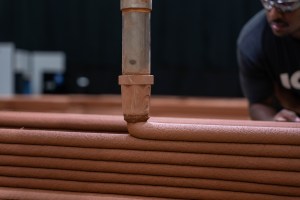
Nathan Jones: We also have a smaller 3D printer here that we’ve found useful, made a lot of prints with it, some ourselves and some related to mission. Some work out, some don’t, you know, and so some of those are kind of fun and interesting to find out how it works out.
Ross Brockwell: Yeah, it’s been pretty neat. I mean, that technology, that versatility is definitely going to be important for a real mission. So we’ve shown a few things. You know, we’ve needed a few things for ourselves in the have that we’ve drawn up and printed that have worked out. And like Nate said, the mission needed a few things. So, yeah, 3D printing is really, really handy.
Kelly Haston: Yeah, I would say that this is definitely future-thinking, but by the time people are settled on Mars, I think that 3D printing of biological materials is going to be much more a reality than it is now. So in my work as a stem cell biologist, we use 3D printing sometimes to create structures using, you know, cellular material. I think that that’s going to be evolving into a space where maybe food items are being made and 3D printing might help that along. Or, you know, even making certain biomaterials that you need for, you know, to keep people healthy, too. So, I’m really interested in that as a future idea of how 3D printing could actually really be exciting for a setting like Mars.
Nathan Jones: I’m just going to put this out there. Maybe they could 3D print urine bottles for bowling.
[Laughs]
Kelly Haston: There you go.
Nathan Jones: I actually have been thinking about 3D printing a new pick guard for my fender guitar. Thought that would be an interesting one to work on.
Ross Brockwell: You know, we could print bowling pins, but that’s the old way.
Nathan Jones: No, why would you that? that’s the whole way we would do that. Who would want that?
[Laughs]
Ross Brockwell: What a waste.
[Laughs]
Anca Selariu: Did you have an opportunity to learn new skills and how do you plan to apply them once you return to Earth?
Ross Brockwell: I mean, it’s a segue for me. I’ve learned that 3D CAD software that we use for the printer, I think I’ve gotten pretty handy with it. So that’s something I’ll probably use in the future is a lot of potential for that. That’s one of them.
Nathan Jones: I think a bunch of us have worked on some language while we were here. Russian, Spanish, Italian maybe. I’ve done some coding myself.
Ross Brockwell: I do feel like the great mystery that is Russian grammar. I’ve like kind of got my foot in the door a little bit on it, so I’ll try to go forward with that after this and try and learn something I can actually retain. So it’s been fun.
Kelly Haston: And the building has really inspired me. So in previous iterations I was allowed to build small things in the lab, but they were really modest. And, you know, thinking about sustainability and building things in your life, I think, you know, even though we might not be doing the same things here that I would do outside, I’ve really enjoyed that aspect and I could see myself and my partner really engaging in and further thinking around that and trying to actually design and build things on our own as well cause I’ve really liked that activity a lot. I think I’ve gotten slightly better at it, only slightly. But—
Nathan Jones: It says we still have two months left in the habitat. What crew activities in the habitat are we looking forward to?
Kelly Haston: I mean, I think July 4th is going to be really fun. I’m saving some corn for that event, which sounds really goofy and sad, but is really exciting to me.
Ross Brockwell: 3D print a cob. We can make corn a cob.
Kelly Haston: Maybe we could actually get a video of fireworks.
Nathan Jones: Yeah. Yeah. I think I got actually a couple of those from my family last year. We were already in mission.
Kelly Haston: That’s true. We were, yes.
Nathan Jones: Things we do together. We’ve been watching a lot of shows together. We finished some, we’ve got a couple that we’re working through. We just tried a new one. I’m not sure if it’s going to work out or not. We’re checking it out.
Kelly Haston: And you know, we’ve celebrated birthdays across the mission, so we have a few more that we will tackle as well. And it’s always nice to have something special about the crew. Sometimes we also, you know, at least recognize or sing a song for our families on the outside, too. So try to send some celebratory, you know, sort of messages to the outside. And actually really cool, recently we got to be part of a 5k that was on the Johnson Space Center campus. So, people on the outside that are part of the mission actually helped us run that race virtual. So that was actually really cool for them. May the fourth be with you race.
Nathan Jones: Well, and I’ve said this before and I know you guys have too, but just one of the absolute best parts, if not the best part of this entire mission is just all the support from the people at NASA working back in Houston and Kennedy and the other space centers across the U.S. to support the mission and support the support everything we’re doing here.
Kelly Haston: Yeah, I have to second that. Amazing, the support we’ve gotten from them and also from our family and friends. Everyone that keeps in touch with us. It’s just been a tremendous experience to be involved with so many people taking care of us and helping us through this. Any final thoughts from CHAPEA 1?
Nathan Jones: That wraps it up for the CHAPEA crew for this month. Thank you so much for all of your interest in our mission as always.
All: Don’t die!
Host: So great once again to hear from all four crew members of the CHAPEA crew on their 11th month in the habitat. Again, this is their second to last month. They only have one more of these. And they’ve already mentioned a couple of things that are their final, namely, the one that comes to mind is their final crop harvest and having a feast. Such a wonderful thing to hear from the crew but seems like they were alluding to a number of things that are going to be final on their next audio log. We purposely are looking towards recordings at the very end of their stay in Dune Alpha. So they’ll be recording just days before their egress and hoping to get a really good grasp of things that are truly final and some of their last thoughts, the last things that they really are keeping in mind just days before exiting the habitat and reentering the world. It’ll be certainly fascinating to hear from.
You know, we start all of these audio logs with the same question. We always start with, how are you doing? And we do that purposely. They made a comment that just like, “Hey, we’re the same as we’ve always been.” But to us, I think at least particular, to me, it’s really reassuring just to hear how well they continue to be month to month, 11 months they’ve been in Dune Alpha and even after 11 months, they’re still giving the same answers. Yeah, things are going pretty well. Just really fantastic to hear that reassurance from the crew that everything’s just going well. Very excited for them to eventually egress the habitat. Again, looking forward to that last audio log next month. So that’s the check in with the CHAPEA crew, all four crew members. Now let’s switch gears and talk with Marisa Covington on research assurance.
Marisa Covington, thank you so much for coming on Houston We Have a Podcast.
Marisa Covington: Thank you for having me here. I’m excited to be here.
Host: Yes, I know. So we work with Grace quite a bit. Grace Douglas, the principal investigator of this study on just making sure that we on the podcast side of things are doing everything in our power to make sure that we’re protecting the research. So this is going to be very interesting to hear from you cause you’re part of the protections of the research and of the subjects. And going into this element of things, we hear about it, we’ve talked about it as sort of this ancillary thing in other topics, but we’ve never done a deep dive into this world of research assurance. I wanted to start, Marisa, by just asking really about you and how you got into this world. If you don’t mind taking us back to the beginning. What inspired you to take the path that you did?
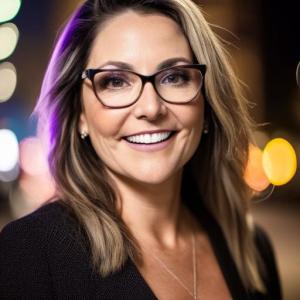
Marisa Covington: So originally, I actually have a PhD in toxicology. I got it from Texas A&M Health Science Center. And I was a professor, or I started off doing a postdoc at the Medical University of South Carolina. And that’s when I really got into doing clinical trials in my postdoc. And I really became very passionate about the human subject protections and what we were doing to protect these individuals. I did actually stay on as research faculty there for a few years. And then right after that, I actually moved to Texas, back to Texas, cause that’s born and raised here. Everybody loves Texas. And I took a job actually in the Human Research Program supporting the Chief Scientist Office. And so I started off as a contractor there, and as I was there, I really started to be more involved with NASA and in the NASA human subject research protections in the IRB. So I served as a member of the NASA IRB for probably about three years. And then I decided to get a master’s in bioethics and really kind of pursue human subject research ethics. And at that point I became the IRB manager for NASA.
Host: What’s IRB?
Marisa Covington: So it’s Institutional Review Board. So the Institutional Review Board reviews all human subject research and their job is actually to make sure that all human subject research is done ethically. And so I really had a passion for this, and I became a certified IRB professional and I served in help running ethics across JSC and all the research they did at JSC. And then in 2020, right when COVID hit, right when it hit, I decided to apply and take the lead position of the Office of Research Assurance, which is located at Headquarters in the Office of the Health and Medical Officer. So that’s where I am located is up there actually. But now in this role, I look at and try to ensure that all research is done ethically across all NASA centers, including ISS, and potentially for any other platforms that we have. Now, when I say research, my office also does include animal as well. I do have a colleague, Dr. Chad Foster, who is our chief veterinarian at NASA, but he also helps me run this office. And so he is instrumental on the animal side and I am more geared towards the human subject research.
Host: Okay. So, yeah, you probably work with us here at the Johnson Space Center quite a bit then. Lots of human research, Human Research Program, Human Health and Performance, lots of human research happening here. So you’re touching a lot of different aspects and it’s multifaceted. We’re going to, of course, going to talk about CHAPEA, but you kind of, it seems like you’re a little bit in all places.
Marisa Covington: So the IRB at NASA is actually an agency IRB. So we cover all centers, so all human subject research. So we have aeronautic research, which occurs a lot at Ames and Langley. But also, the majority of our protocols and our research is here at JSC. And I would say approximately about 75% of the protocols that the NASA IRB sees are here at JSC.
Host: Now, you talk about, I mean, if you were to digest your role is to make sure that when it comes to research and human subjects, that it is done ethically. Now what exactly does that mean? What is ethical research?
Marisa Covington: So, actually NASA has its own CFR. So CFR stands for Code of Federal Regulations. So it’s 14 CFR 1230. And that actually outlines what ethical research is for human subjects. So the first thing is it has to meet the definition of human subjects, and it has to meet the definition of research. Now, this isn’t my definition of research, it’s not your definition of research, it’s the definition that’s in the CFR. So it’s very specific. And some would argue that that doesn’t mean all research. So, you have to look at the CFR to make sure it meets those definitions. And if it does, then it does require review from an IRB. And within the CFR, it does tell us certain parameters that we have to make sure. And one is that consent. And I will tell you, after being in this field for so many years, consent is probably the most important thing. So we want the subjects to know, one, what they’re getting into, what are the risk of those that study, you know, what’s the PI doing to mitigate those risk? Like are there mitigations? And also, hey, you know, what am I getting paid for this? Or what is the compensation? So that’s a big thing too from an IRB perspective, is to make sure people aren’t being coerced into science. We’ve had a long history of coercion and, you know, it starts from Nuremberg, right? I think everybody knows about Nuremberg.
Host: Can you elaborate on Nuremberg?
Marisa Covington: So it’s when the Nazis and the Nazis camp with the Jews, they did scientific experiments on the Jews and, you know, without consent. Another one that we have in our history is the Tuskegee syphilis study, right? Where, you know, we already had a drug that treated syphilis, but yet we didn’t give it to subjects, you know, and there was no consent about that. Consent is one of the major, I would say the major targets that is very important for ethical research, cause we want the individual to know what they’re doing. We want them to know the risk, and we want to make sure that it’s not coercive. And we also want to make sure that we use language that people understand. So if you’re doing a population that doesn’t speak English, you want to make sure that that consent is in a language that they understand. And so I think that’s one of the big targets that we at the NASA IRB try to make sure is that consent is done ethically.
In addition to that, we also want to make sure that the reimbursement’s not coercive. So I can’t pay you $50,000 to draw your blood because that’s not really, you know, it’s not feasible. That’s not something you would do. Whereas like, hey, you get paid minimal wage, $15 an hour, so if it takes you three hours and we give you $45, that’s pretty equitable. And so those are other things that we look at. The IRB as a whole looks at risk to benefit, too. So we want to look at the total risk that these subjects are going through and the benefit that’s going to get from the research protocol. And so we weigh that risk to benefit ratio. And you always want the benefit to be a little bit higher than the risk. So, those are things that we look at to make sure things are done ethically.
Host: Okay. So it seems like when you talk about ethics, when you talk about research ethics, your perspective is you are going right for the subject, you’re making sure the subject is protected, you’re making sure the subject is compensated. There’s a lot that has to do with there. Does it expand beyond that? Is it in terms of the gathering of the research or make sure that the research itself is, you know, done to make sure that it’s actually going to, you know, be something that researchers can handle?
Marisa Covington: Yes.
Host: Okay. So it goes beyond just the subject.
Marisa Covington: So it does, and we make sure that when we look at the qualifications of the PI and of any of the study coordinators or anything like that to make sure that they are looking at, or they are able to carry on these. So obviously if you have somebody doing a lumbar puncture, you don’t want me doing it cause I am not a doctor, right? So we make sure that it’s a qualified individual to do these things right? So we do look at that as well. One of the things we don’t look at, which is a little bit different than maybe academia or some of the research institutions is we don’t look at research misconduct, which is a little bit different because maybe that is looking at publication. And the reason we don’t look at that is because at NASA, the Chief Scientist Office is in control of research misconduct. And so they control that. So it looks at, you know, people falsifying data, people giving ghost authorship or requiring authorship when it’s unethical. Those things are outside my office. But the only reason why is because it is handled with the Chief Scientist’s Office.
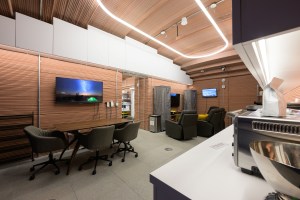
Host: So your office comes in during the planning phases and maybe execution phases, and then the chief scientist comes in maybe after the publication phase?
Marisa Covington: Yes.
Host: Okay. So you guys take different parts of the timeline there when it comes to research.
Marisa Covington: But I will say we do interact. And then sometimes there might be some overlap. And so we do have a close communication, so if there is overlap, we do communicate with them quite frequently.
Host: Okay. Yeah. There’s a lot to it. So, making sure that the subjects are ethically protected and that has many layers to it. The definition of consent goes really deep to make sure that it truly is consensual to make sure that really, there has been a lot of thought into the compensation. So really, I think a lot of your time, a lot of your efforts, is really into the details and diving deep in saying this is it really, you know, you can talk about it at a high level, but yours is really spending the time and effort making sure that truly this meets those standards. And that’s where this document comes in.
Marisa Covington: Yeah. And I will go back just for a second cause I didn’t kind of mention a little bit about data privacy. Cause that’s another thing that is very important. It is very important in the consent form if it is disclosed, if your data will be shared or, you know, if it’s going to be made publicly available. That is important to know. And I think that’s another spot where we come in and to help prevent, you know, to make sure the subjects know what’s going to be used with that. Like what that data’s going to be used for and how it’s going to be used and how it’s going to be shared, and if it’s going to be shared identifiable, deidentifiable, you know, those are very important distinctions. So, you know, if I’m sharing identifiable information publicly, that would mean that my family, my children would know. If it’s deidentifiable, then it might not be such an issue. Because nobody’s going to know it’s me. And so I think that’s the other thing that I didn’t mention that we look at. And that is very important from an IRB perspective.
Host: Especially when it comes to, and you could tell what your perspective is, right? From the perspective of the subject. How was the subject’s families going to react to this if we don’t follow the right data privacy steps to ensure that. So it’s a very interesting perspective, overarching, understand a little bit more about what you do. Let’s dive into the specifics of CHAPEA as sort of an analog for how to actually apply some of the things that you are doing and how you’re working with the different teams. Tell us about the beginning when you were approached that says, “Hey Marisa, we have this crazy idea to have human subjects in a habitat for a year.” You know, what are the first steps to make sure we’re doing that ethically? When were you pulled into the process?
Marisa Covington: So I’ll tell you, we were pulled in very early on. Which is great. So I always tell everybody that as a PI or anybody looking at doing science, the sooner you pull in the IRB, the better you’re going to be because it’s the same thing. You don’t want a design, a widget without pulling in safety early because you’re going to design something that is not doable. And I think as soon as you get the IRB involved, the sooner we can help design, or at least we don’t really design it. I think that’s the wrong word, and I apologize for using that word, but it’s more like we help guide saying, “Look, this is going to be a showstopper. You can’t do this because it might be coercive, or you can’t do that because you know, it’s too risky and there’s no benefit to the subject.” So, you know, I think getting us involved sooner rather than later is always better for the investigators. I always tell everybody, and I know everybody hates the IRB, by the way and I’m well aware of that, cause we are known as a roadblock. I would like to argue that we’re not right. That we’re here to help facilitate research while ensuring the protection of the subjects. And we are here to help people do a human subject research protocol successfully and also ethically. So the sooner you involve us, the better we can help guide and say, “This is going to work, this isn’t going to work.”
CHAPEA included us very early on. There were a couple of times that there were some roadblocks that we had to address and, you know, we worked through them, and they came back and, you know, they were successful and like, okay, this is doable. And so I think they’re a good example of interacting with the IRB to help facilitate the research that needed to be done there.
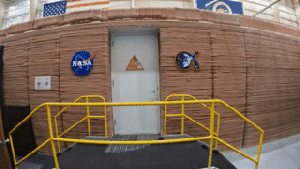
Host: Well, it seems like they already sort of had that perspective in mind. It seems like folks that may not be familiar with the IRB, like you said, that that perspective of a roadblock, they are taking the perspective of, this is the research that I want, this is how I’m going to get it. Maybe they haven’t framed in their mind how that impacts the subject as much they have. They’re not familiar with those details. You said you thought so long and hard to put into this document of just exactly what is ethical considerations as part of those research. And there’s a lot, there’s likely a lot of nuance to that maybe just might not be familiar with, which is where your expertise comes in. So it could be a difficult challenge to get past that roadblock for sure.
Marisa Covington: Right. But I think it’s doable in any situation. You know, at NASA, we’ve worked, we have some very complex human subject research protocols that we have worked through with docs and made them doable.
Host: So when it comes to you talk beginning phases, right? You talked about how the CHAPEA teams brought you and your group in early. What’s that process like when it comes to actually screening the research and making sure it is ethical? Do they present you with their ideas and you say yes or no? Or are they going through the IRB a little bit earlier? Because, you know, with some initial concepts that maybe aren’t as fully flushed out, what happens at the beginning stages there?
Marisa Covington: So, at the beginning stage, it’s normally just me help navigating, or the IRB staff, to help navigate through either what needs to be included in the protocol, things that are showstoppers, things that we should work on. We also have subject matter experts that are board members. So occasionally we’ll include them in some of our meetings. So prime example is we have a lot of research that utilizes crew, right? So we’ll do some representation from SD, which is our docs, our flight surgeons. And so we’ll have them come and put, you know, provide some input as well. For CHAPEA specifically, we had safety involved at the very beginning too, to help us guide any issues or concerns that might come about. However, once the protocol is completed, this study is a greater than minimal risk protocol. So all of those studies actually go to the full board.
The NASA IRB meets monthly. We have representation across NASA, so at different centers across NASA and also here at JSC. And they actually review the protocol. So they look at the protocol and review it, and it’s done at a full board. It’s reviewed and approved by the board, not me specifically. We do have a different route, which is for minimal risk protocols. It’s expedited. It has to fit some of the categories in our Code of Federal Regulations, but those are outside of board. And those can be approved either by me or by subject matter experts. But this particular protocol, because it’s greater than minimal risk, it did go to a full board. So it’s not just my eyes looking at it. We have a board member of about 12 to 13 individuals that looked at this protocol when it first came. There were some comments actually that needed to be addressed and some concerns, and it was addressed, and then it was approved, at the full board meeting.
Host: Okay. But it probably helped. So because it’s a greater than minimal risk, you know, you have to take a couple of extra steps just to ensure that that ethical protections, right? Going through, that’s where the full board comes in, but involving you early in the process, likely smooth that out just a little bit, right?
Marisa Covington: Correct. And so sometimes, if a protocol doesn’t involve us early on, occasionally it will be deferred or tabled. Which meaning that they have a lot of work to do and then have to come back to the board. And so, involving us sooner helps often eliminate that step.
Host: Because what you’re doing is you’re actually injecting those ethical considerations into the protocol. So that step hasn’t been actually put through, you know, then the board, it’s not ready for the board. You have to have the ethical considerations in the protocol. I understand. So I have this acronym, ORA, do you know what that is?
Marisa Covington: So it’s the Office of Research Assurance. So that’s what that means. And so some would argue that we’re called ORA because it’s in the OCHMO office. It’s the Office of the Chief Health and Medical Office. But we are also located there, the Office of Research Assurance, which is what I help lead.
Host: So we talked a lot about, how the ORA—can I call it? Is it called the ORA?
Marisa Covington: I just call it ORA.
Host: Okay. How this is going to be fun. So, how ORA is a part of the whole design, or not necessarily design, but you guys are involved in making sure that you’re providing guidance to those protocols goes through the IRB. Now, the crew members ingress the habitat and you are in as part of a yearlong study. What is ORA’s—this is so fun to just say—ORA. What is ORA’s role in the day to day? Or just, you know, how are you guys involved while the study is going on to ensure that the crew members and the procedures and the protocol are being followed to those ethical standards?
Marisa Covington: So I’m going to burst your bubble here.
[Laughs]
Host: Okay. I’m ready.
Marisa Covington: So normally, actually it’s the IRB that’s involved more than ORA.
Host: Okay.
Marisa Covington: So it’s my role as the chair of the NASA IRB, probably that’s involved a little bit more. And I will tell you why. So this particular protocol has a DSMB, which is the Data Safety Management Board.
Host: Okay.
Marisa Covington: And so part of that is they meet quarterly. So they meet with the PI and the staff, and they look at the data being collected. They look at any issues and they meet quarterly. And those reports are then filed with the NASA IRB. And so we get those reports and we review them as well too. So not only is the IRB reviewing it, you have the Data Safety, Management Board reviewing it, and then you also have safety reviewing it at NASA. So I’ll be honest, I mean this protocol is reviewed probably more than, you know, a typical protocol that we see at the NASA IRB. However, all those reports come back to the NASA IRB. And they are uploaded, and we do review them. In addition to that, because it’s a greater than minimal or risk protocol, this protocol does go in front of the board every year. So we do look at it. But we also do look at all those reports. We have not, looking at those reports, we have not had an issue to where we had to convene a meeting to address anything that has been an emergency or something that we felt was worth calling an ad hoc for, which is great.
Host: That’s fantastic to hear.
Marisa Covington: Yeah. I mean, it’s a great thing. I kind of want to knock on wood.
[Laughs]
Host: We’re so close, right? We’re very close to egress.
Marisa Covington: Yeah. And we couple more weeks, right? But the other part is that the team has been very vocal and responsive to, if they have a concern, and it might be a concern and it might not be a concern, but they might not know. So they reach out to me. And I’ll be honest, the communication between the Office of Research Assurance, this is where the Office of Research Assurance comes in. The communication between the Office of Research Assurance and the team has been tremendous. So like any questions that they have, even if they’re not sure, they’ll ask. And that to me is something I’m so grateful for cause we really don’t have that communication all the time with our PIs, and we wish we could. And so for them, you know, they’ll pick up a phone or they’ll shoot me a Teams message and be like, “Marisa, I just need five seconds. Do you have a minute?” And I will definitely drop what I’m doing, and I will get on there and see what the problem is. If there is a problem, it might not even be a problem. And I’ll be honest with you, about 95% of the time it’s not a problem. I mean, it’s a great thing. Like I would rather them reach out more than not reach out at all. So I think that’s the one thing about this team that I think has been very welcoming for me is to understand that they feel welcome to reach out to me or to the staff.
Host: So we’ve spent a lot of time in this podcast following the crew over the past year and talking with various PIs and contributors to enable CHAPEA. They talked about it as an integrated study and all of these different components to it. I wonder from your perspective, from the IRB, from ORA, working within CHAPEA, if you’ve noticed, and you’ve mentioned it a couple of times, right? It seems like CHAPEA is taking a more integrated approach. It seems like they’re being more proactive. But on top of that, there’s this interesting component to this particular research study, which it’s over the course of a year. So I wonder your observations of you know, the IRBs involvement and your involvement in this mission and how that may maybe compares to research that’s maybe more typical for human research at NASA.
Marisa Covington: So I think that’s a hard question, to be honest with you, to answer. I think it depends on the risk of that research, right? So we tend to be more involved in research that are a little bit more riskier, right? And so putting somebody in a can for a year tends to be a little bit more riskier than maybe drawing blood or doing an LP or putting somebody on a treadmill or an exercise device, right? And so I think in the studies that are greater than minimalist or are more riskier, we do tend to be involved a little bit more. I think that’s normal. However, I will say the communication between management and the PI and the CHAPEA staff, and not only ORA,, but also with the IRB staff, has been tremendous. And it is stellar, the fact that they reach out to us and they tell us, you know, I’ve never had to contact them for something I heard, right? You know, they are the first ones to call us. And that’s not always the case, unfortunately. I wish there were more examples that, you know, did do that. But I mean, I think it just depends on the risk. So greater than minimal risk protocols tend to have a better communication with us. Doesn’t mean everybody. But in this instance, I think that they are very proactive with asking questions. And you know, it’s not only with me, it’s with the IRB staff. So it goes universally and it’s an example that I think is great and I welcome this interaction.
Host: Yeah. And typically, my final question to our special guest on this audio log series is talking about the importance of CHAPEA. I’m curious on your perspective, but I’m already getting a sense. I think one of the things that’s nice about CHAPEA is the fact that your group has been involved so early, and the communication is so well established. So I’ll pose the same question to you, and you could expand on that as much as you’d like. But when it comes to CHAPEA as an integrated study, this longer study, why do you think this is an important thing to do for NASA?
Marisa Covington: So you bring up a good point. So I think I might have two approaches to this. So the ethical approach would be that I think it truly sets an example of how greater than minimal risk protocol should be and how to help utilize the Office of Research Assurance and the IRB to help make sure research is done ethically. They came to us early. It is a great example of that. And to look at any issues or concerns that come up throughout this process, they have been very vocal in that communication. I think it sets a great example for that. Now as NASA as a whole and for spaceflight, I think as we go through longer durations and we go to different destinations, I think it’s very important to look at confinement and the risk of confinement, but also for the comm delay and other issues that we may have. And whether it be food, whether it be exercise, some of the other issues that we have. I think NASA has some risk that we need to look at to attenuate. And I think this is a first example for that. And I think it sets the example.
Host: Very important to hear from you on that. So this has been very enlightening. This is a topic that I think we’ve been wanting to talk about for quite some time on this podcast and dive into because it’s so widespread. So hearing from you on some of the important work that and perspective that you take when approaching research has been incredible to hear about. Marisa Covington, thanks. Thank you so much for coming on Houston We Have a Podcast. It’s been an absolute pleasure.
Marisa Covington: Thank you for having me. I truly enjoyed it. Thank you.
[Music]
Host: Hey, thanks for sticking around. Wonderful conversation with Marisa. I hope you enjoyed, and of course, a great check-in with the crew. That’s it for Audio Log #11 from Dune Alpha. I hope you’re enjoying the crew’s journey. This is the 11th audio log in our series. You can tune in next month for their last audio log, Audio Log #12. It’s so exciting. It’s right around the corner. So of course, at any time, you can check out nasa.gov for the latest on what’s happening with the CHAPEA crew. And if you like the podcast, you can check us out at nasa.gov/podcasts or the many other shows that we have across the agency. If you want to engage with us on social media, we’re on the NASA Johnson Space Center pages of Facebook, X, and Instagram. And you can use #AskNASA on your favorite platform to submit an idea for the show, just make sure to mention it’s for us at Houston We Have a Podcast. Recordings were sent in from the CHAPEA crew through May. And we had the conversation with Marisa on June 18, 2024. Thanks to Will Flato, Dane Turner, Abby Graf, Jaden Jennings, Dominique Crespo, Anna Schneider, Laura Sorto, and Kelsey Spivey. Thanks to Marisa Covington, PhD, for taking the time to come on the show. Thanks to Grace Douglas and Jennifer Miller for their efforts in reviewing these audio log episodes every month. And a big thanks to Kelly Haston, Ross Brockwell, Nathan Jones, and Anca Selariu for sharing their experience for this audience on Houston We Have a Podcast. Give us a rating and feedback on whatever platform you’re listening to us on and tell us what you think of our podcast. We’ll be back next week.
This is an Official NASA Podcast.




